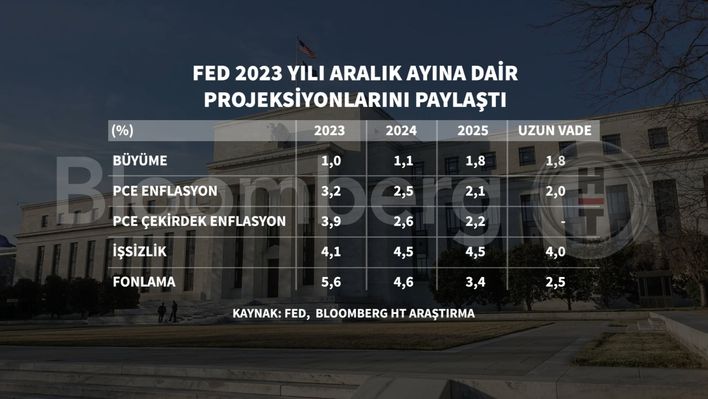Fed turns its attention to super-core inflation

BURCU KIRATLI/BLOOMBERG HT RESEARCH ANALYST
While the whole world was trying to combat the devastating effects of inflation, central banks of developed countries waged a war against inflation.
While different indicators are taken into account in the fight against inflation, the Fed seems convinced that a new measure of price growth, super-core inflation, will help to better assess the situation.
Supercore inflation is intrinsically linked to two factors: the consumer price index (CPI), the best-known inflation indicator in the US, and the personal consumption expenditures price index (PCE). Both measure the average price change in a basket of goods and services, but the CPI is from consumers and the Fed’s preferred PCE is from businesses.
Because both the CPI and the PCE measure a wide variety of commodities, the Fed and economists traditionally prefer to look at core CPI or PCE inflation to better handle price fluctuations.
This is because the core CPI, or core PCE, excludes volatile, temporary price fluctuations in the food and energy categories, thus giving a better insight into the longer-term inflation trend.
Supercore inflation is equal to basket of goods and services inflation. From this, food and energy inflation is subtracted from housing inflation. This ultra-focused lens is what makes the inflation-measure price cluster “super-core.”
Fed Chairman Jerome Powell said in a statement that core services other than housing, namely supercore inflation, “may be the most important category for understanding the future evolution of core inflation.”
What is super core inflation?
So what exactly is this supercore inflation that Powell is talking about? What expenses count as supercore?
In the US context today, supercore inflation mostly reflects prices for services provided by lawyers, plumbers, gardeners and hairdressers, which remain stubbornly high.
The inflation measure excludes food, energy and housing prices. All of this has created price fluctuations over the past few years that are unrelated to the normal business cycle or business cycle, such as the impact of the pandemic on the supply chain and the impact of the Ukraine war.
Traditionally, the Fed has focused on core inflation. Because the components were thought to be less volatile and therefore temporary. The new supercore measure has attracted more attention for exactly this reason.
Why is the Fed paying attention to super-core inflation right now?
The concept became more popular in the United States after it was introduced by Powell and top economist and Nobel laureate Paul Krugman.
Economists; They argue that the components that cause unusual increases in inflation rates should be excluded from inflation measures.
The Fed’s focus on “super-core” categories also highlights the cost of labor. Thus, the central bank can better measure the effect of wages on prices.
For example, prices for haircuts and personal care services fell from January to February earlier this year compared to a year ago.
In comparison, it is emphasized that the problem with television prices in the same period and persistent inflation may be caused by the increase in the prices of services rather than goods.
In a tight labor market, companies have to pay higher wages to retain their employees, forcing them to pass on these higher labor costs to final consumers. This further increases inflation and encourages further wage growth.
Why should we care about supercore inflation?
The Fed has increased interest rates from March 2022 through May 2023 to rein in rising inflation, making the cost of borrowing more expensive for everything from mortgages to credit cards. This should theoretically encourage people to save rather than spend and cool the economy.
The Fed’s look at more stubborn “super-core” areas contributing to rising prices means they could raise rates even as housing costs and rents start to fall.
On March 7, Powell signaled that the Fed would raise rates higher than previously expected, as “so far there is little sign of falling inflation in the core services category excluding housing.”
So as long as supercore inflation remains high, the Fed will have to continue to use policy tools to push these measures down,” and at some point this may come at the cost of triggering an economic recession that will affect companies in all sectors to some degree.
The Fed’s inflation target is 2 percent, so inflation is still very high, and not all economists are convinced to focus on super-core inflation because, after all, expensive housing and transportation – and therefore food and fuel – also affect people’s cost of living.
However, in the latest data, super-core inflation has fallen from 5.1 percent to 4.6 percent, and it is far from inflation targeting in the big picture and is a candidate to be one of the most important data that the Fed pays attention to in its next roadmap.





